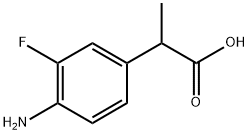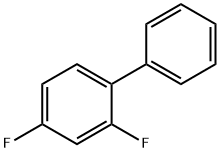Ethyl 2-chloropropionate
- CAS NO.:535-13-7
- Empirical Formula: C5H9ClO2
- Molecular Weight: 136.58
- MDL number: MFCD00000864
- EINECS: 208-610-0
- SAFETY DATA SHEET (SDS)
- Update Date: 2024-12-18 14:15:30

What is Ethyl 2-chloropropionate?
Description
Ethyl-2-chloropropionate is a liquid with apleasant odor. Molecular weight = 136.8; Boilingpoint = 147℃; Flash point = 41.8℃
Chemical properties
clear colorless liquid
Chemical properties
Ethyl-2-chloropropionate is a liquid with a pleasant odor
The Uses of Ethyl 2-chloropropionate
Ethyl 2-chloropropionate was used as initiator during the synthesis of poly(2-(diethylamino)ethyl methacrylate) and poly(N-isopropylacrylamide) via atom transfer radical polymerization. It was also used in the synthesis of end-functionalized poly(N-isopropylacrylamide) with pyrenyl group.
General Description
A clear colorless liquid with a pungent odor. Flash point of 100°F. Denser than water and insoluble in water. Vapors are heavier than air.
Air & Water Reactions
Highly flammable. Insoluble in water.
Reactivity Profile
Ethyl 2-chloropropionate is a halogenated ester. Esters react with acids to liberate heat along with alcohols and acids. Strong oxidizing acids may cause a vigorous reaction that is sufficiently exothermic to ignite the reaction products. Heat is also generated by the interaction of esters with caustic solutions. Flammable hydrogen is generated by mixing esters with alkali metals and hydrides.
Health Hazard
May cause toxic effects if inhaled or absorbed through skin. Inhalation or contact with material may irritate or burn skin and eyes. Fire will produce irritating, corrosive and/or toxic gases. Vapors may cause dizziness or suffocation. Runoff from fire control or dilution water may cause pollution.
Fire Hazard
HIGHLY FLAMMABLE: Will be easily ignited by heat, sparks or flames. Vapors may form explosive mixtures with air. Vapors may travel to source of ignition and flash back. Most vapors are heavier than air. They will spread along ground and collect in low or confined areas (sewers, basements, tanks). Vapor explosion hazard indoors, outdoors or in sewers. Runoff to sewer may create fire or explosion hazard. Containers may explode when heated. Many liquids are lighter than water.
Potential Exposure
This material is used in organic synthesis.
First aid
If this chemical gets into the eyes, remove anycontact lenses at once and irrigate immediately for at least15 min, occasionally lifting upper and lower lids. Seek medical attention immediately. If this chemical contacts theskin, remove contaminated clothing and wash immediatelywith soap and water. Seek medical attention immediately. Ifthis chemical has been inhaled, remove from exposure,begin rescue breathing (using universal precautions, including resuscitation mask) if breathing has stopped and CPR ifheart action has stopped. Transfer promptly to a medicalfacility. When this chemical has been swallowed, get medical attention. Give large quantities of water and inducevomiting. Do not make an unconscious person vomit.Medical observation is recommended for 24- 48 h afterbreathing overexposure, as pulmonary edema may bedelayed. As first aid for pulmonary edema, a doctor orauthorized paramedic may consider administering a corticosteroid spray.
storage
Color Code—Red: Flammability Hazard: Store in aflammable liquid storage area or approved cabinet awayfrom ignition sources and corrosive and reactive materials.Prior to working with this chemical you should be trained onits proper handling and storage. Store in tightly closed containers in a cool, well-ventilated area away from acids, bases,oxidizing and reducing agents. Sources of ignition, such assmoking and open flames, are prohibited where ethyl-2-chloropropionate is used, handled, or stored in a manner thatcould create a potential fire or explosion hazard
Shipping
UN2935 Ethyl 2-chloropropionate, Hazard Class: 3; Labels: 3-Flammable liquid.
Incompatibilities
Flammable liquid; forms explosive mixture with air. Incompatible with oxidizers (chlorates, nitrates, peroxides, permanganates, perchlorates, chlorine, bromine, fluorine, etc.); contact may cause fires or explosions. Keep away from alkaline materials, strong bases, strong acids, oxoacids, epoxides, and reducing agents. Esters are generally incompatible with nitrates. Moisture may cause hydrolysis or other forms of decomposition. Esters react with acids releasing heat in addition to alcohols and acids. Contact with caustic solutions generate heat. Contact with esters with alkali metals and hydrides releases flammable hydrogen.
Properties of Ethyl 2-chloropropionate
| Boiling point: | 146-149 °C (lit.) |
| Density | 1.072 g/mL at 25 °C (lit.) |
| refractive index | n |
| Flash point: | 101 °F |
| storage temp. | Flammables area |
| solubility | alcohol: miscible |
| form | clear liquid |
| color | Colorless to Light yellow |
| Specific Gravity | 1.085 (20/4℃) |
| Water Solubility | immiscible |
| Merck | 14,3785 |
| BRN | 773906 |
| Dielectric constant | 10.1 |
| CAS DataBase Reference | 535-13-7(CAS DataBase Reference) |
| NIST Chemistry Reference | Ethyl 2-chloropropionate(535-13-7) |
| EPA Substance Registry System | Ethyl-2-chloropropionate (535-13-7) |
Safety information for Ethyl 2-chloropropionate
| Signal word | Warning |
| Pictogram(s) |
 Flame Flammables GHS02  Exclamation Mark Irritant GHS07 |
| GHS Hazard Statements |
H226:Flammable liquids H315:Skin corrosion/irritation H319:Serious eye damage/eye irritation |
| Precautionary Statement Codes |
P210:Keep away from heat/sparks/open flames/hot surfaces. — No smoking. P233:Keep container tightly closed. P240:Ground/bond container and receiving equipment. P241:Use explosion-proof electrical/ventilating/lighting/…/equipment. P303+P361+P353:IF ON SKIN (or hair): Remove/Take off Immediately all contaminated clothing. Rinse SKIN with water/shower. P305+P351+P338:IF IN EYES: Rinse cautiously with water for several minutes. Remove contact lenses, if present and easy to do. Continuerinsing. |
Computed Descriptors for Ethyl 2-chloropropionate
Ethyl 2-chloropropionate manufacturer
Anand Agencies
New Products
Tert-butyl bis(2-chloroethyl)carbamate (S)-3-Aminobutanenitrile hydrochloride N-Boc-D-alaninol N-BOC-D/L-ALANINOL N-octanoyl benzotriazole 3-Morpholino-1-(4-nitrophenyl)-5,6-dihydropyridin- 2(1H)-one Furan-2,5-Dicarboxylic Acid Tropic acid Fmoc-Val-Cit-PAB DIETHYL AMINOMALONATE HYDROCHLORIDE 1,1’-CARBONYLDIIMIDAZOLE R-2-BENZYLOXY PROPIONIC ACID 1,1’-CARBONYLDI (1,2-4 TRIAZOLE) N-METHYL INDAZOLE-3-CARBOXYLIC ACID (2-Hydroxyphenyl)acetonitrile 4-Bromopyrazole 5-BROMO-2CYANO PYRIDINE 5-broMo-2-chloro-N-cyclopentylpyriMidin-4-aMine 2-(Cyanocyclohexyl)acetic acid 4-methoxy-3,5-dinitropyridine 2-aminopropyl benzoate hydrochloride 1-(4-(aminomethyl)benzyl)urea hydrochloride tert-butyl 4- (ureidomethyl)benzylcarbamate diethyl 2-(2-((tertbutoxycarbonyl)amino) ethyl)malonateRelated products of tetrahydrofuran








You may like
-
 2-Chloropropionic acid ethyl ester 98%View Details
2-Chloropropionic acid ethyl ester 98%View Details -
 Ethyl 2-chloropropionate 98.00% CAS 535-13-7View Details
Ethyl 2-chloropropionate 98.00% CAS 535-13-7View Details
535-13-7 -
 Ethyl 2-Chloropropionate practical grade CAS 535-13-7View Details
Ethyl 2-Chloropropionate practical grade CAS 535-13-7View Details
535-13-7 -
 Ethyl 2-chloropropionate 95% CAS 535-13-7View Details
Ethyl 2-chloropropionate 95% CAS 535-13-7View Details
535-13-7 -
 Ethyl-2-chloro propionate CAS 535-13-7View Details
Ethyl-2-chloro propionate CAS 535-13-7View Details
535-13-7 -
 Ethyl 2-Chloropropionate CAS 535-13-7View Details
Ethyl 2-Chloropropionate CAS 535-13-7View Details
535-13-7 -
 Ethyl 2 Chloropropionate CAS 535-13-7View Details
Ethyl 2 Chloropropionate CAS 535-13-7View Details
535-13-7 -
 Ethyl 2-chloropropionate CAS 535-13-7View Details
Ethyl 2-chloropropionate CAS 535-13-7View Details
535-13-7